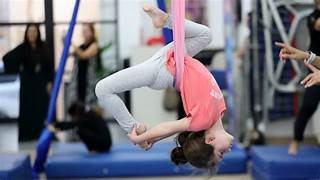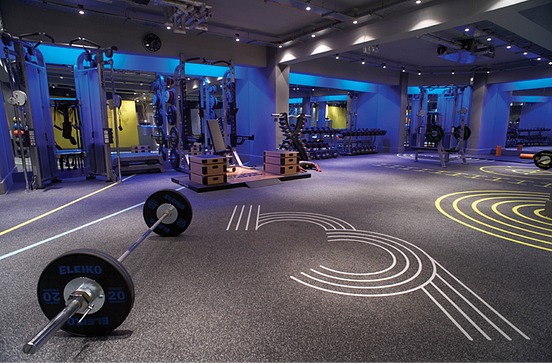
Mindful Muscle: How Meditation Improves Physical Strength.
Meditation is more than a mental practice; it strengthens the mind-body connection, enhances focus, reduces stress, and optimizes recovery, ultimately improving physical strength. By combining mindfulness, visualization, and body awareness, individuals can train smarter, lift more efficiently, and accelerate muscle growth, demonstrating that true strength arises from the harmonious integration of mental discipline and physical effort.
💪 Fitness Guru
52 min read · 11, Oct 2025

Introduction
In the realm of physical fitness, meditation may seem like an unlikely ally. We often associate muscle growth and strength with lifting heavy weights, high-intensity workouts, or protein-packed diets—not with sitting still in silence. However, a growing body of scientific evidence suggests that the mind plays a critical role in building and maintaining physical strength. Meditation, traditionally used for mental clarity and emotional balance, is now being recognized as a powerful tool for enhancing physical performance, muscle recovery, and even strength development.
This article delves into how meditation affects the mind-body connection, optimizes muscular performance, accelerates recovery, and transforms the way athletes and everyday fitness enthusiasts approach physical training.
1. The Science Behind Mind-Body Connection
The human body is not merely a mechanical structure—it’s an integrated system controlled by the mind. Every muscular movement originates from a neural command sent by the brain. The more focused and efficient this communication becomes, the better the physical performance.
Meditation strengthens this mind-body connection. By training attention and awareness, meditation enhances neural pathways between the brain and muscles. Research from neuroscience shows that mindfulness practices increase cortical thickness in areas responsible for body awareness and motor control.
In simple terms, meditation fine-tunes the brain’s ability to send accurate, powerful signals to muscles. The result? Improved coordination, greater control, and even enhanced strength output during workouts.
2. Meditation and Muscle Activation
A fascinating phenomenon known as “neural drive” explains why meditation can boost strength. Neural drive refers to the intensity of the signal the brain sends to muscles during contraction. Studies have shown that visualization and mindfulness can amplify this neural activation—even in the absence of physical movement.
For example, a study published in the Journal of Neurophysiology found that participants who practiced mental imagery (visualizing themselves lifting weights) increased muscle strength by nearly 13%, without any physical exercise. The reason lies in the activation of the same motor neurons that would fire during actual movement.
Meditation enhances this process by improving concentration and reducing mental noise. When the mind is calm and focused, muscle activation becomes more deliberate, efficient, and powerful. Over time, this mental conditioning translates into real-world physical strength.
3. Reducing Cortisol: The Key to Better Muscle Growth
One of meditation’s most profound physiological benefits is its ability to regulate stress hormones—particularly cortisol. Cortisol, known as the “stress hormone,” is catabolic, meaning it breaks down muscle tissue. Chronic stress elevates cortisol levels, leading to fatigue, muscle loss, and poor recovery.
Meditation has been proven to reduce cortisol production by promoting relaxation and stimulating the parasympathetic nervous system. When cortisol levels are balanced, the body’s anabolic (muscle-building) processes function more effectively.
In other words, meditation creates a hormonal environment that supports growth, repair, and strength rather than breakdown and depletion.
4. Improved Focus and Performance During Training
Every athlete knows that focus can make or break performance. Losing concentration, even momentarily, can result in poor form, wasted energy, or even injury. Meditation trains the brain to sustain attention and remain present—a state often described as “flow.”
In this flow state, athletes experience complete immersion in their activity, leading to better coordination, reaction times, and endurance. Research on mindfulness-based performance enhancement (MBPE) programs shows significant improvements in athletes’ focus, reaction speed, and accuracy.
Furthermore, meditation reduces performance anxiety, which can otherwise sabotage physical output. By staying calm and mentally centered, athletes can push harder, lift heavier, and recover faster.
5. Meditation Enhances Recovery and Reduces Inflammation
Strength training and physical exertion create microtears in muscles, triggering inflammation—a necessary part of growth and adaptation. However, excessive inflammation can slow recovery and cause soreness or injury.
Meditation activates the parasympathetic nervous system (the body’s “rest and digest” mode), which accelerates recovery processes. It lowers heart rate, reduces systemic inflammation, and promotes the release of growth hormones essential for tissue repair.
A study published in Frontiers in Human Neuroscience found that individuals who practiced mindfulness meditation showed significantly faster recovery from physical exertion and lower markers of inflammation. This means that meditation doesn’t just make you mentally resilient—it helps your body bounce back stronger.
6. Pain Management and Mindful Training
Pain tolerance is another area where meditation makes a tangible difference. Whether during intense workouts or rehabilitation from injury, pain can be both a physical and psychological barrier.
Mindfulness meditation trains the practitioner to observe pain sensations without reacting to them emotionally. Brain imaging studies have shown that meditators experience reduced activation in the brain’s pain-processing centers and increased activity in areas related to emotional regulation.
This allows athletes to push through discomfort safely and differentiate between “good pain” (growth-related) and “bad pain” (injury warning). Over time, this enhances endurance, discipline, and resilience.
7. The Role of Visualization in Strength Building
Visualization, a form of meditative practice, has long been used by elite athletes to improve performance. When you vividly imagine performing a task, your brain activates similar neural circuits as when you physically perform it.
Olympic athletes, martial artists, and powerlifters often use mental imagery to refine technique and build confidence. For instance, imagining yourself executing a perfect lift or sprinting with flawless form reinforces the neural blueprint for that movement, making the actual performance more efficient.
When combined with traditional meditation, visualization strengthens both mental clarity and physical readiness, acting as a bridge between thought and muscle action.
8. Meditation Techniques That Boost Physical Strength
Different meditation practices can benefit strength training in unique ways. Below are a few techniques particularly effective for physical enhancement:
a. Mindfulness Meditation:
Focuses on breathing and body awareness, enhancing mental clarity and focus during workouts.
b. Body Scan Meditation:
Encourages awareness of each muscle group, helping identify tension or imbalance that may hinder performance.
c. Visualization or Mental Rehearsal:
Involves imagining perfect execution of physical tasks, stimulating neural and muscular pathways.
d. Transcendental Meditation (TM):
Reduces stress and cortisol, promoting hormonal balance and recovery.
e. Movement Meditation (e.g., Tai Chi, Yoga):
Combines mindfulness with physical motion, improving flexibility, coordination, and strength synergy.
Regularly incorporating these techniques—before, during, or after training—can significantly elevate performance levels.
9. Case Studies and Real-Life Examples
Several real-world examples highlight meditation’s role in strength and athletic performance:
- Elite Athletes: Many professional athletes, including LeBron James, Novak Djokovic, and the Seattle Seahawks, integrate mindfulness and meditation into their training regimens to enhance focus and recovery.
- Military Training: U.S. Navy SEALs use mindfulness practices to stay calm and focused under extreme pressure, improving both mental resilience and physical control.
- Weightlifters and Martial Artists: Practitioners report greater muscle-mind connection, better form, and fewer injuries after incorporating meditation into their routines.
These cases underscore that mental conditioning is as vital as physical conditioning when it comes to peak performance.
10. How to Integrate Meditation Into a Strength Routine
Here’s how fitness enthusiasts can begin integrating meditation into their daily practice:
- Pre-Workout (5–10 minutes):
- Use mindfulness or visualization to set intentions, focus on breathing, and mentally rehearse movements.
- During Workout:
- Practice body awareness—notice muscle engagement, breathing rhythm, and posture.
- Post-Workout (10–15 minutes):
- Use guided relaxation or body scan meditation to promote recovery and reduce muscle tension.
- Before Sleep:
- Engage in short meditation sessions to regulate cortisol and enhance muscle repair overnight.
By embedding meditation into training routines, the body and mind learn to operate as one cohesive unit—maximizing performance while minimizing stress.
Meditation, often seen as a practice solely for mental clarity or emotional balance, has profound implications for physical strength, bridging the gap between mind and body in ways that traditional workouts alone cannot achieve, as every movement originates from neural commands sent by the brain, and meditation enhances the efficiency and precision of these commands, resulting in improved coordination, muscle activation, and overall performance; scientific studies have shown that mindfulness and meditation increase cortical thickness in regions responsible for motor control and body awareness, effectively “training” the brain to communicate with muscles more effectively, which translates into higher strength output and better physical control, and the phenomenon known as neural drive—essentially the intensity of signals sent to muscles—is amplified by mental focus and visualization, allowing individuals to increase muscle strength even without additional physical exertion, as demonstrated in studies where participants visualizing strength exercises showed measurable gains, highlighting that meditation and mental rehearsal can complement physical training by priming muscles for more efficient contractions; beyond neural optimization, meditation also regulates stress hormones, particularly cortisol, which is catabolic and breaks down muscle tissue when chronically elevated, and through relaxation and activation of the parasympathetic nervous system, meditation lowers cortisol levels, creating a hormonal environment conducive to muscle repair, growth, and recovery, which is critical for anyone engaging in resistance training or high-intensity workouts, as unchecked stress can hinder progress, impair recovery, and reduce overall performance, while mindfulness techniques simultaneously enhance focus, concentration, and presence, allowing athletes and fitness enthusiasts to achieve a “flow state” where physical movements become more precise, reaction times improve, and energy is used efficiently, and this mental state also reduces performance anxiety, providing a psychological advantage that can result in lifting heavier weights, executing better technique, and training more consistently; moreover, meditation accelerates recovery by lowering systemic inflammation and heart rate, promoting the release of growth hormones, and facilitating muscular repair, as supported by studies indicating faster recovery times and reduced markers of inflammation in meditators compared to non-meditators, which makes the integration of meditation into fitness routines not only beneficial but essential for maximizing the results of strength training; additionally, meditation improves pain tolerance and resilience, teaching practitioners to observe discomfort without emotional reactivity, which allows them to differentiate between productive, growth-related soreness and potential injury, thereby training safely and effectively, while visualization techniques, a subset of meditative practice, activate the same neural pathways as actual physical movement, reinforcing proper technique, boosting confidence, and increasing efficiency in executing complex exercises, a method widely used by elite athletes across sports, including weightlifting, martial arts, and team sports, demonstrating that mental conditioning is as integral to physical development as traditional training methods; several meditation approaches are particularly effective for strength enhancement, including mindfulness meditation, which focuses on awareness of breathing and bodily sensations to sharpen concentration; body scan meditation, which targets awareness of muscle engagement and tension to optimize movement patterns; transcendental meditation, which reduces stress and balances hormones for improved recovery; and movement-based meditations like Tai Chi or yoga, which combine mindfulness with physical motion to increase strength, flexibility, and coordination simultaneously, all of which contribute to a holistic approach that integrates mind and muscle, creating a synergistic effect where improvements in focus, awareness, recovery, and neural activation compound over time to enhance physical performance; real-world examples underscore this impact, from professional athletes like LeBron James and Novak Djokovic, who attribute part of their success to daily meditation practices, to military training programs such as those for Navy SEALs, which utilize mindfulness to maintain calm and control under extreme physical and psychological stress, and studies confirm that meditators experience reduced activation in pain-processing brain regions while improving emotional regulation, allowing them to train harder and recover faster, and consistent incorporation of meditation into pre-workout, during workout, and post-workout routines has been shown to improve strength, reduce injury risk, enhance recovery, and optimize performance, as a few minutes of focused mindfulness before lifting can prime neural pathways, body awareness during exercise can improve muscle engagement, and post-workout meditation can accelerate relaxation and healing, with short sessions before sleep further regulating stress hormones and promoting growth; ultimately, the integration of meditation into strength and fitness routines demonstrates that true physical power is inseparable from mental conditioning, as meditation optimizes neural communication, lowers cortisol, reduces inflammation, enhances focus and endurance, and strengthens pain tolerance, enabling athletes and fitness enthusiasts to train more efficiently, recover more effectively, and perform at higher levels while maintaining mental clarity and emotional balance, proving that meditation is not just a complementary practice but a fundamental tool for unlocking the full potential of both mind and body, and through techniques like mindfulness, visualization, body scanning, and movement meditation, individuals can cultivate a mindful muscle approach where every contraction is intentional, every lift is precise, and every recovery cycle is accelerated, ultimately redefining strength as the harmonious union of mental discipline and physical power, highlighting that the future of fitness lies not only in external exertion but in internal mastery, where the calm, focused mind orchestrates the body to achieve levels of performance, resilience, and growth that surpass what could be achieved through conventional training alone.
Meditation, often perceived merely as a mental or spiritual practice, has a profound impact on physical strength and athletic performance, bridging the critical mind-body connection that traditional exercise alone may overlook, because every muscular contraction begins with a neural signal sent from the brain, and meditation enhances the efficiency, precision, and focus of these signals, resulting in improved coordination, stronger muscle activation, and optimized physical output, while research in neuroscience indicates that mindfulness practices can increase cortical thickness in regions responsible for motor control, body awareness, and attention regulation, meaning that a well-trained mind can significantly influence how effectively muscles respond during strength training, and studies have demonstrated that techniques such as mental imagery or visualization, which are closely linked with meditation, can even lead to measurable gains in muscle strength without physical exertion, illustrating that neural activation alone, when focused and intentional, primes the muscles for action and facilitates growth, and in addition to neural efficiency, meditation also plays a critical role in regulating hormonal balance, particularly by reducing cortisol levels, the stress hormone that, when chronically elevated, can impair muscle recovery, inhibit protein synthesis, and lead to catabolic breakdown of muscle tissue, whereas regular mindfulness practice promotes parasympathetic nervous system activity, fosters relaxation, and creates an environment conducive to muscle repair, recovery, and growth, thereby amplifying the benefits of physical training, while also enhancing mental focus and concentration, allowing athletes and fitness enthusiasts to enter a state of flow in which movements become more precise, energy utilization improves, reaction times accelerate, and training sessions are executed with maximum efficiency and minimal distraction, and meditation also helps manage performance anxiety, which can otherwise undermine strength output or cause hesitation during heavy lifts or high-intensity workouts, and beyond performance, meditation accelerates recovery by reducing inflammation, lowering heart rate, and promoting the release of growth hormones and other anabolic factors that are essential for repairing microtears caused by resistance training, which is supported by studies showing meditators experience faster recovery times and fewer markers of systemic inflammation, translating into less soreness, reduced injury risk, and more consistent training, in addition to its recovery benefits, meditation improves pain tolerance by allowing individuals to observe discomfort without reacting emotionally, which is crucial during intense workouts or rehabilitation, as it distinguishes between productive, adaptive soreness and potentially harmful pain, while visualization—a meditative practice in which one imagines performing movements with perfect form—activates the same neural pathways that are engaged during actual physical execution, reinforcing proper technique, improving mind-muscle connection, and increasing efficiency during real-world lifting or athletic performance, and this is why elite athletes across various disciplines, from Olympic competitors to professional team sport players, integrate meditation and visualization into their daily routines to enhance both mental clarity and physical capability, and different meditation approaches contribute in unique ways: mindfulness meditation improves sustained attention and present-moment awareness, body scan meditation heightens awareness of tension or imbalance in muscle groups, transcendental meditation reduces cortisol and supports hormonal equilibrium, and movement-based meditations such as yoga or Tai Chi integrate mindfulness with motion, enhancing coordination, balance, flexibility, and muscular endurance simultaneously, creating a synergistic effect where the mind guides the body with precision and intent, and practical integration into a fitness regimen can be straightforward: a few minutes of meditation before training can prime focus and neural activation, mindfulness during workouts ensures proper engagement of muscles and awareness of breathing and form, and post-workout meditation facilitates recovery, reduces muscle tension, and accelerates healing, while short sessions before sleep can further regulate stress hormones and optimize overnight repair, demonstrating that meditation not only complements physical training but amplifies its effects, ultimately redefining strength as a combination of mental discipline and physical power, rather than merely the ability to lift heavy weights or endure high-intensity exercise, because the focused mind improves neural communication, enhances muscle activation, optimizes hormonal environment, increases pain tolerance, accelerates recovery, and sharpens concentration, which together allow individuals to perform at higher levels with greater efficiency, resilience, and control, and real-world examples from athletes such as LeBron James, Novak Djokovic, and other elite performers, as well as military programs like those for Navy SEALs, highlight the tangible benefits of incorporating meditation into physically demanding routines, from improved focus and reduced stress to better recovery and injury prevention, and this evidence underscores that meditation is not a passive activity but an active enhancer of physical capacity, capable of creating measurable strength gains when practiced consistently alongside traditional resistance or performance training, and the holistic integration of meditation with fitness practices fosters not only stronger muscles but a stronger mind, greater awareness of body mechanics, enhanced coordination, and a more intentional approach to training, ultimately proving that the art of building strength lies not only in lifting weights or pushing physical limits but in cultivating mindfulness, focus, and presence that guide the body to perform at its maximum potential, making meditation an essential, science-backed tool for anyone seeking to improve muscular strength, optimize recovery, and achieve peak physical performance in a sustainable, efficient, and mindful way.
Conclusion
Meditation and physical strength are deeply interconnected through the mind-body axis. While strength training builds the body, meditation trains the brain to direct that strength with focus, precision, and control.
Through improved neural communication, reduced cortisol, enhanced recovery, and sharper concentration, meditation creates a fertile ground for muscle growth and peak performance. It’s not just about lifting heavier weights—it’s about lifting them smarter, calmer, and more efficiently.
In a world obsessed with physical exertion, meditation reminds us that true strength begins in the mind.
Q&A Section
Q1: What is the main connection between meditation and physical strength?
Ans: Meditation enhances the mind-body connection, improving neural communication and muscle activation, which directly contributes to better strength and performance.
Q2: Can meditation alone increase muscle mass?
Ans: Meditation alone doesn’t build muscle mass but optimizes hormonal balance, focus, and recovery—making physical training more effective.
Q3: How does meditation help in post-workout recovery?
Ans: It activates the parasympathetic nervous system, reducing inflammation, promoting relaxation, and accelerating muscle repair.
Q4: How long should I meditate to see results in my physical performance?
Ans: Consistent practice of 10–20 minutes daily can lead to noticeable improvements in focus, recovery, and endurance within a few weeks.
Q5: Is visualization a form of meditation?
Ans: Yes, visualization is a meditative technique that involves mentally rehearsing physical actions, strengthening neural pathways for improved real-world performance.
Similar Articles
Find more relatable content in similar Articles

Circus Fitness – Learning Strength Through Acrobatics...
Circus fitness transforms trad.. Read More

Breathwork for Performance: Oxygen Training Secrets of Athle..
Discover how elite athletes ar.. Read More

Mindful Muscle: How Meditation Improves Physical Strength...
Meditation is more than a ment.. Read More

Apocalypse Fitness – Training for Survival Without Modern Gy..
Apocalypse Fitness prepares th.. Read More
© 2024 Copyrights by rFitness. All Rights Reserved.